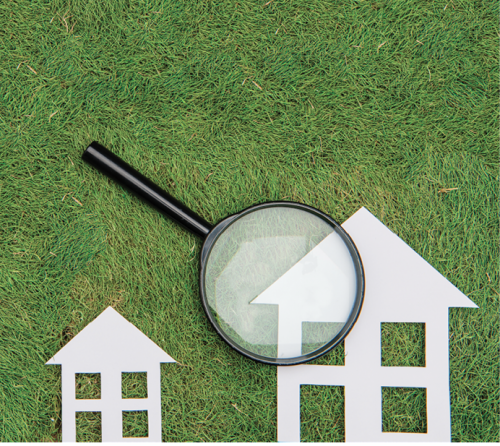
Green building and energy performance are ever-developing areas within the construction industry. So too are the associated risks for industry stakeholders. So far, claims relating to green building construction have been—and will likely continue to be—asserted based on theories that resemble traditional construction defect claims. This can include claims related to breach of contract, breach of warranty and tort (negligence and strict liability). Therefore, in the context of green building, manufacturers and dealers should consider methods similar to those used to limit risk in the more traditional construction defect arena.
Traditionally, construction claims have focused on workmanship and materials. The foundations, framing, roofs and envelopes, as well as mechanicals, are the usual targets for claims of building defect. A building’s green status and energy performance—like its foundation, envelope and roof—involve similar design, engineering and construction considerations, and incorporate specific materials and products to achieve a desired result.
Like the desired result of functioning foundations, walls and roofs, manufacturers may achieve the “result” of a green building by applying code requirements with reference to established standards, incentive programs and requirements set forth in the project’s contract documents. The industry can have some sense of what form the emerging risks associated with green building may take because of this similarity in how the codes, standards and contractual scopes apply to design, construction methods and materials.
Case in point
An early “green building” lawsuit was brought in Maryland in 2007. The case, called Shaw Development v. Southern Builders, involved a dispute over delay costs associated, in part, with the developer’s failure to achieve LEED Silver certification, which was specified in the contract. The claim was that a large state tax credit was alleged to have been lost to the owner due to project delay.
The delay did not appear to be specifically caused by an alleged performance failure of green building or energy-related components. However, the case demonstrates that “green-specific” benefits, such as a local tax credit, may become potentially recoverable as damages in a breach of contract claim. And, such claims may not be covered by a traditional commercial general liability insurance policy.
Architects, engineers and builders generally have the obligation for code compliance in design and construction. They also must satisfy specific contractual obligations. Builders will routinely transfer those risks to subcontractors through express indemnity provisions and additional insured requirements in the contract documents. Therefore, each participant in the contractual chain may have some exposure for meeting a specific aspect of green certification or energy performance.
Potential contract-based claims
Especially in light of the Shaw case, it is not hard to envision how customers may make contract-based claims for either a failure to meet an energy code requirement on the one hand, or a specific contractual promise to achieve either green certification or actual in-service requirements on the other. In such a claim, the client could likely seek damages for costs of “repair and/or replacement” of the alleged underperforming condition, as well as loss of use or diminution value of the structure. And, perhaps even the Shaw-like “missed opportunity” damages of associated green incentive benefits could apply.
As remote manufacturers and suppliers, some fenestration industry participants may not occupy positions within the contractual chain similar to those of designers and contractors. However, all should be mindful of the promises and contractual obligations they undertake in their own contracts or purchase orders regarding products and components.
Disclaimers and limitations are important aspects of limiting exposure to risks associated with the “end result” of construction. Design, product selection, code compliance and green certification have been generally outside the scope and control of product manufacturers. Consider delineating these limitations in sales and warranty documents, as well as product instructions.
It is important that stakeholders refrain from offering blanket product performance guarantees or committing that use of products will enable a structure to meet performance or compliance standards or certifications, such as LEED certification.
For fenestration products, NFRC certification and Energy Star labels provide general information regarding product energy performance in specific and controlled laboratory testing and evaluation. While the industry recognizes that laboratory results are difficult to exactly reproduce in the field, given the variables of handling, installation, use and maintenance, enterprising attorneys looking to add as many defendants as possible to a large green building claim may ignore those realities to assert product-specific claims.
Insurance policy coverage should also be considered. The language within the typical CGL policy states that the policy covers “those sums that the insured becomes legally obligated to pay as damages because of ‘bodily injury’ or ‘property damage.’” (“Property damage” is usually defined as “physical injury to tangible property.”)
Policy provisions can have different interpretations from state to state. However, one common thread regarding courts’ interpretation of “property damage” (subject to exceptions) is that some thing must be damaged for insurance to apply, i.e. some component of the building other than the insured’s product or work.
In the context of energy performance, it is safe to assume that most insurance carriers would regard a claim based solely on whether a component or product met code or standards as not causing “damage” to other property. In the absence of a claim that a product caused physical damage, insurance carriers would likely argue that such claims are relegated to the parties’ own contractual assignment of risk, not as a covered claim.
A 2014 Colorado case, Wardcraft Homes v. Employers Mutual Cas. Co., shows that a claim based on the home’s alleged failure to meet Energy Star requirements does not involve a claim for “property damage;” so that no coverage would be available. To address such issues in the context of Energy Star, recently proposed legislation would have amended the program to provide that an Energy Star label would not normally amount to a warranty or guarantee that could be actionable in court. This proposed amendment has since been abandoned.
While the risks of exposure for green building and energy performance may not differ significantly from traditional construction defect claims, they can pose unique circumstances of potential damages and risk assignment. Therefore, stakeholders should refocus on limiting risks relating to green building claims through warranty provisions, purchase order language, and terms and conditions of sale provisions. By using these measures, stakeholders may manage their scope of responsibility arising from the green building and energy certification process.


